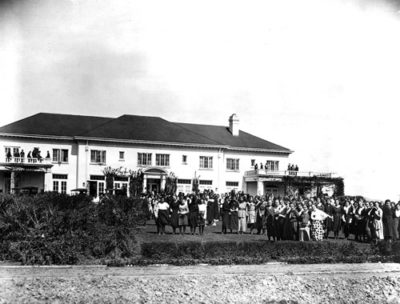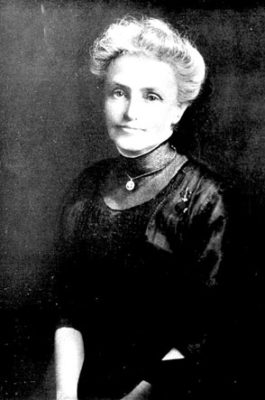Trailblazer Mary Caswell leaves legacy at Marlborough School

THE BRAND NEW $70,000 Colonial style campus opened in 1916 to 125 girls.
This October, Marlborough, the oldest independent girls’ school in Southern California, celebrates its 125th anniversary.
Currently nestled right here in our own Hancock Park backyard, it took the vision of an orphaned, widowed woman to bring it to life.
Mary Caswell was born in Paris, Me., in 1850, and was educated at private schools throughout New England, including Bridgton Academy, Fryeburg Academy and later at Freehold Young Ladies Seminary in New Jersey. At the age of seven, her mother died, and four years later her father passed away. Before she was 13 years old, she had also lost four of her siblings.

WHEN EDUCATING GIRLS was considered a luxury, Caswell packed her curriculum.
In 1879, Mary married George Caswell and they moved to Portland, Me., where she established the Caswell School in 1883. Then, less then three years after their marriage, George Caswell died unexpectedly, leaving Mary to raise an infant and an asthmatic daughter with no source of income. Caswell decided that Southern California would be a better climate for her daughter’s fragile health, and they arrived in Pasadena in 1888.
Within the year, Mary founded “Mrs. Mary Caswell’s School for Girls” in Pasadena. The school soon changed its name to “St. Margaret’s” and moved to several other Pasadena locations before settling into the defunct Marlborough hotel in downtown Los Angeles at 23rd and Scarff streets in 1890. The name reminded Caswell of Marlborough Street in Boston, so she adopted the name that the school still holds today.
In a time when educating girls was considered a frivolous luxury, the forward-thinking Caswell packed her curriculum with English, arithmetic, history, literature, art history, Greek, Latin, rhetoric, philosophy, sciences, geography, Bible history and calisthenics. Caswell was determined to “help each student build a sound character, a disciplined mind, a healthy body and a resourceful, responsible spirit.”
As the city and Caswell’s clientele moved westward, Mary opted to follow them and uprooted the school yet again. In 1913, she bought six acres at the corner of the future Third and Rossmore, and in 1916 opened the brand new, $70,000 Colonial style campus to 125 girls. It served as part boarding school, part daily instruction.
Although the plot of land is still the same, the similarities to today’s campus end there
In 1916, the school’s new buildings were surrounded by barley and bean fields and sat blocks from the nearest paved intersection. Streetcars only ran to Larchmont Blvd., and since the roads surrounding the school were still dirt, a wooden plank sidewalk was built from Larchmont to the school’s front porch. The location was considered hazardously far out-of-town, but the school’s dedicated families continued to send their girls for the half-day of instruction.
In 1924, school founder and headmistress Mary Caswell passed away, leaving the school to her daughter, Mrs. Georgia Overton. School was dismissed for one week, and when it reopened, Miss Ada Swazey Blake, one of the school’s teachers and administrators, became headmistress. Miss Blake served as head of school until 1942, at which point Mrs. Overton herself took over the position for six years, continuing her mother’s traditions. During this time, Overton changed the school from part-boarding school to a complete day school, enlisting the services of Mrs. Kenneth Mitchell, who would succeed Overton as headmistress from 1948-1962.
Mrs. Virginia Jennings took over the position in 1962, and then was followed by Phillip Perkins. In 1966, the Colonial-style campus buildings were torn down and replaced by more modern, spacious buildings designed by the firm of William Periera and Assoc. at the cost of two million dollars.
In 1970, Robert Chumbook took over the school leadership, promoting athletics for young women and created an endowment program.
Today, Barbara Wagner oversees 530 students, following Caswell’s vision for the highest quality women’s education available in the United States.
Category: Real Estate


